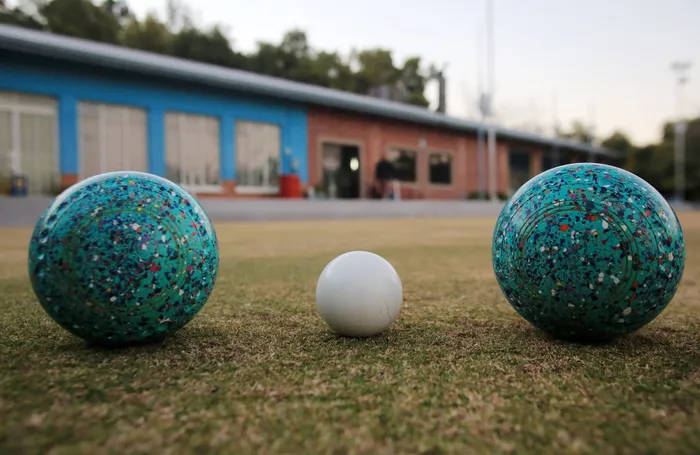Rolling through millennia, lawn bowls has a rich history – from stone spheres to waxed woods

From stone balls to polished balls, the game of lawn bowls has evolved through the years, to the sport it is today. Picture: Danie van der Lith
STEP onto the pristine green grass of a lawn bowls club, and you’ll find yourself immersed in a world where skill, strategy, and camaraderie blend seamlessly.
The sport of lawn bowls, often associated with leisurely afternoons and well-dressed players, carries a rich history that spans centuries. From its humble beginnings to its status as a beloved pastime enjoyed by millions around the world today, lawn bowling continues to captivate players and spectators alike.
The origins of this timeless sport can be traced back to ancient civilizations.
The Egyptians played a rudimentary form of lawn bowling over 5,000 years ago, directing stone orbs at a target some distance away. The Greeks and Romans refined the game, introducing more polished spheres and establishing dedicated playing areas. However, it was during the 13th century in England that lawn bowls, on turf surfaces, began to take shape.
In mediaeval England, the game was enjoyed by both the nobility and the common folk. Initially played on grassy patches in churchyards and village greens, it soon found its way into the courtyards of royal palaces. Henry VIII himself was a passionate player; but, probably realising the addictiveness of the game, banned the sport during his reign for fear that his subjects were becoming too consumed by it.
Thankfully, his successors embraced the game, and it flourished.
The 19th century saw the formalisation of the rules and organisation of lawn bowls. The oldest surviving bowls club, the Southampton Old Bowling Green, was established in 1299 and is still active to this day.
As the sport gained popularity, clubs sprang up across England and eventually spread to other parts of what was then the British Empire, including Australia, New Zealand, and South Africa. The competitive nature of the game led to the formation of national associations, tournaments, and championships, further fueling its growth.
These days, the sport of lawn bowls is played on a meticulously manicured green, divided into individual lanes called rinks. The objective is to roll biassed (weighted on one side) balls, also known as ‘bowls’ or ‘woods’, as close as possible to a smaller white ball called the jack.
Players must consider the surface, weight, and trajectory of their bowls, employing strategy and precision to outwit their opponents. With an emphasis on fine motor skills and mental acuity, the sport of lawn bowls challenges players of all ages and abilities.
One of the enduring appeals of the sport lies in its inclusivity. Lawn bowls welcomes participants from all walks of life, fostering a sense of community and camaraderie. Clubs often serve as social hubs, bringing people together and creating lasting friendships. While the game may appear sedate, it is not without its moments of excitement as players execute daring shots or engage in heated battles of wits.
In recent years, lawn bowling has embraced innovation while preserving its traditional values. Technology now allows for better-quality greens and more accurate equipment, enhancing the playing experience without compromising the essence of the game. Various formats, such as singles, pairs, and team events, cater to different preferences and levels of competitiveness.
As the world moves at an ever-faster pace, lawn bowls provide a welcome respite, a chance to slow down and savour the simple joys of, in this case, a well-aimed roll. Whether it’s a casual game among friends or a fiercely contested tournament, this sport continues to enchant and inspire, connecting generations and reminding us of the enduring power of tradition.
So, the next time you pass by a bowling green and notice a group of bowlers gracefully engaging in a game on the manicured green, take a moment to acknowledge and appreciate the centuries of history and the skillful pursuit that is lawn bowls.
Related Topics: